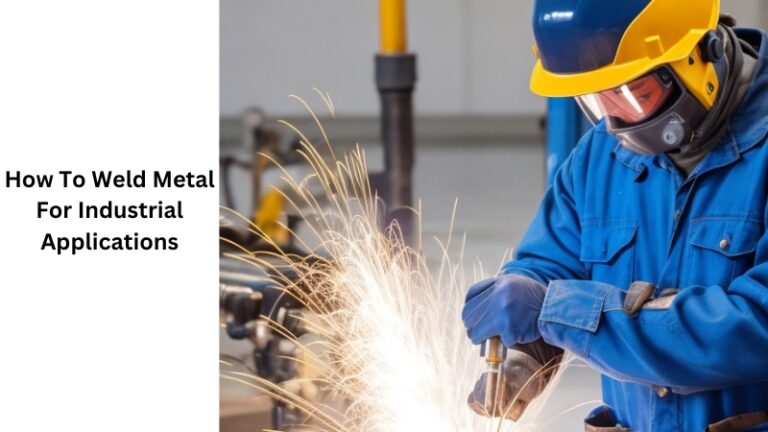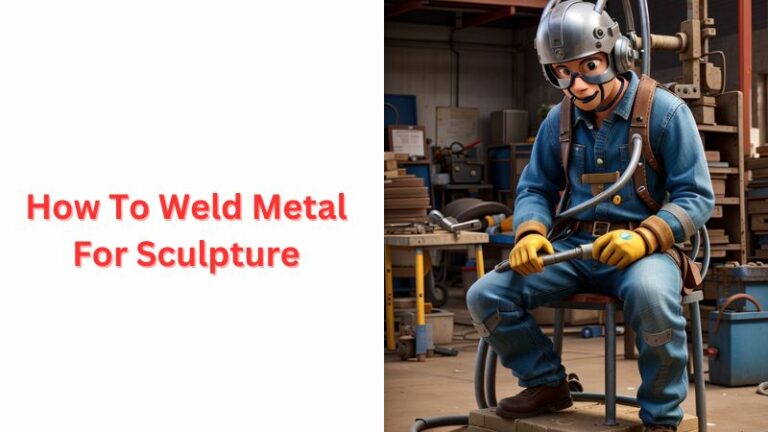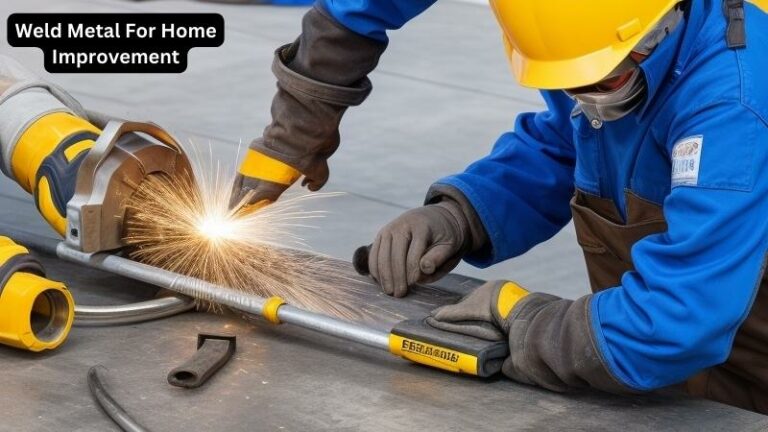How To Weld Metal Alloys
Today we discuss How To Weld Metal Alloys. Welding is an essential skill for any metalworker, and understanding how to weld metal alloys is even more crucial. Metal alloys, which are created by combining different metals to enhance their properties, are used in a wide range of industries, from aerospace and automotive to construction and manufacturing. Whether you are a professional welder or a DIY enthusiast looking to tackle a metal welding project, mastering the art of welding metal alloys can open up a world of possibilities.
Welding metal alloys requires a unique set of skills and knowledge due to their varying compositions and properties. From stainless steel and aluminum to titanium and nickel alloys, each metal alloy poses its own challenges and considerations when it comes to welding.
By understanding the characteristics of different alloys and employing the appropriate welding techniques, you can achieve strong and durable welds that meet the highest industry standards.
So, whether you are interested in joining metal alloys for structural purposes or creating intricate designs, this guide will equip you with the expertise needed to weld metal alloys with precision and finesse. Let’s dive into the fascinating world of welding metal alloys and unlock your potential as a skilled metalworker.
How to Weld Metal Alloys:
- Prepare the materials and make sure they are clean and free from any contaminants.
- Choose the appropriate welding method based on the metal alloy you are working with.
- Set up the welding equipment and ensure proper safety measures are in place.
- Start by tacking the pieces together to hold them in place.
- Weld along the joint, using the appropriate welding technique and filler material.
- Allow the welded joint to cool down slowly to prevent cracking or distortion.
- Inspect the weld for any defects and make necessary repairs if required.
- Clean the welded area and remove any slag or spatter.
How to Weld Metal Alloys:
Welding metal alloys requires precision, skill, and the right tools. Whether you are a professional welder or a DIY enthusiast, this step-by-step guide will provide you with the necessary information to successfully weld metal alloys. Follow these instructions carefully to ensure a strong and durable weld.
Step 1: Prepare the Work Area
Before you begin welding, it is crucial to prepare the work area properly. Start by cleaning the metal surface using a wire brush or sandpaper to remove any dirt, rust, or paint. This will ensure better adhesion and a cleaner weld.
Next, secure the metal pieces together using clamps or welding jigs to hold them in place. Make sure the work area is well-ventilated and free from any flammable materials.
Additionally, it is important to wear appropriate safety gear, such as welding gloves, a welding helmet, and a welding apron, to protect yourself from sparks and hot metal fragments. Safety should always be a top priority when working with welding equipment.
Step 2: Choose the Right Welding Method
Selecting the correct welding method is essential for welding metal alloys. The most common methods for welding alloys include Tungsten Inert Gas (TIG) welding and Metal Inert Gas (MIG) welding. TIG welding is often preferred for its high precision and clean finish, while MIG welding is faster and more suitable for thicker materials.
Research the specific metal alloy you are working with to determine the best welding method. Take into consideration factors such as the alloy’s composition, thickness, and intended application. Consult welding experts or refer to welding manuals for guidance on the most appropriate welding technique.
Step 3: Prepare the Welding Equipment
Once you have chosen the welding method, it is crucial to prepare the welding equipment accordingly. Ensure that your welding machine is compatible with the selected welding process and that it is properly set up. Adjust the welding parameters, such as voltage and wire speed, based on the metal alloy and thickness.
Besides, select the appropriate filler metal or welding wire for the specific alloy you are working with. The filler metal should have a similar composition and properties to the base metal to achieve a strong and reliable weld. Clean and load the welding torch with the selected filler material, ensuring smooth and uninterrupted feeding during welding.
Step 4: Perform the Welding Process
Now that the work area is prepared and the welding equipment is ready, it’s time to start the welding process. Begin by positioning the welding torch at a 90-degree angle to the joint, holding it steady, and maintaining a consistent distance from the workpiece. Gradually start the arc, and once initiated, move the torch along the joint in a controlled and steady motion.
Pay close attention to the welding parameters, such as the arc length, travel speed, and heat input, to ensure proper penetration and fusion of the metal alloy.
Maintain a steady hand and a consistent welding speed to achieve uniform and strong welds. Monitor the weld pool and adjust the torch movement accordingly to prevent defects like undercutting or porosity.
Step 5: Post-Welding Inspection and Finishing
After completing the welding process, allow the welded joint to cool down naturally. Inspect the weld for any visible defects or imperfections, such as cracks or incomplete fusion. If necessary, perform additional welding passes or repairs to ensure the desired quality.
Once you are satisfied with the weld’s integrity, clean the welded area using a wire brush or grinding wheel to remove any welding slag or rough edges.
This will give the weld a clean and professional appearance. Finally, apply any necessary post-weld treatments, such as painting or protective coatings, to enhance the weld’s durability and resistance to corrosion.
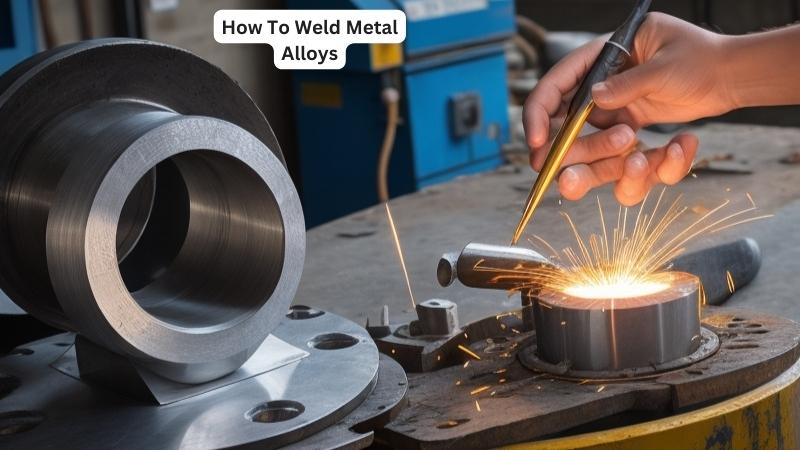
Faqs for How To Weld Metal Alloys:
Metal alloys are materials made by combining two or more metallic elements. These combinations result in new materials with enhanced properties, such as increased strength, durability, or resistance to corrosion.
Common examples of metal alloys include steel, stainless steel, aluminum alloys, and bronze.
When welding metal alloys, it is important to consider the specific properties of the alloy being used, as different alloys may require different welding techniques and procedures.
Welding metal alloys requires specific equipment to ensure a successful and safe welding process. The essential equipment includes a welding machine, electrodes or filler wire, welding helmet, welding gloves, and protective clothing.
The welding machine provides the necessary heat and current for the welding process, while electrodes or filler wire are used to join the metal alloys together.
Several welding techniques can be used for metal alloys, depending on the specific alloy and the desired weld quality. The most common welding techniques for metal alloys include Tungsten Inert Gas (TIG) welding, Metal Inert Gas (MIG) welding, and Stick welding.
TIG welding is often preferred for welding thin metal alloys or for applications requiring high precision. MIG welding, on the other hand, is suitable for thicker metal alloys and allows for faster welding speeds. Stick welding is commonly used for heavy-duty applications or when welding metal alloys with impurities or contaminants.
Welding metal alloys involves working with high temperatures and potentially hazardous materials. Therefore, it is crucial to take proper safety precautions to protect yourself and others. Always wear appropriate personal protective equipment (PPE), including a welding helmet, gloves, and protective clothing to shield against sparks, UV radiation, and molten metal.
Ensure that your work area is well-ventilated to prevent the inhalation of fumes and gases generated during the welding process. It is also important to follow safe working practices, such as keeping flammable materials away from the welding area and properly grounding the welding equipment to prevent electrical hazards.
To achieve high-quality welds when working with metal alloys, it is important to follow proper welding techniques and procedures. Ensure that the metal surfaces being welded are clean and free from contaminants, as impurities can weaken the weld joint.
Proper heat control is crucial when welding metal alloys, as excessive heat can cause distortion or even melting of the base metal. Take the time to practice and perfect your welding technique, ensuring that the weld pool is adequately formed and that the weld bead has good penetration and fusion with the base metal.
Regularly inspect and test your welds to ensure they meet the required quality standards. This can be done through visual inspection, non-destructive testing methods, or destructive testing if necessary. If you are unsure about any aspect of the welding process, seek guidance from a qualified welding professional.
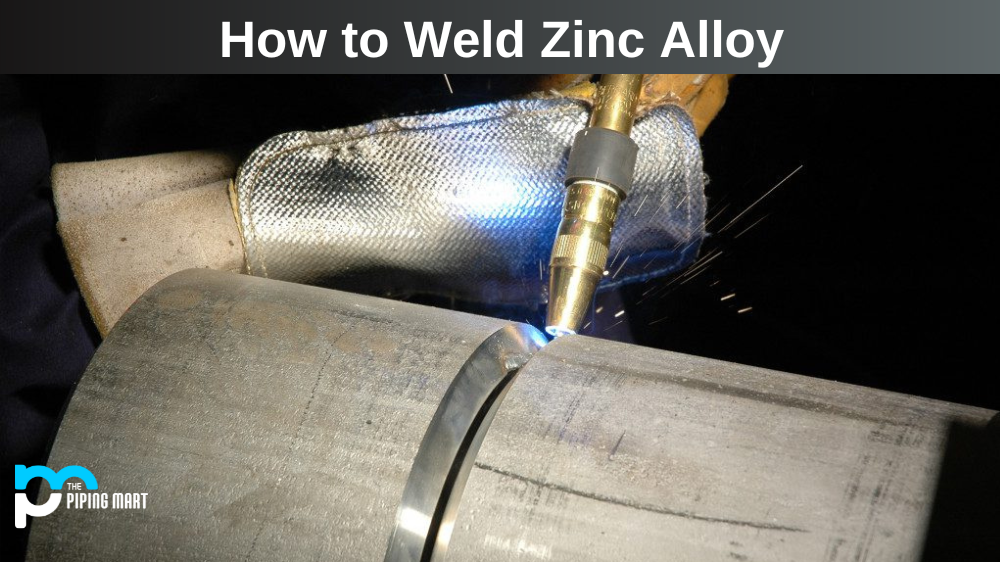
Source: thepipingmart.com
conclusion:
mastering the art of welding metal alloys is not only a valuable skill but also a gateway to endless possibilities in the world of fabrication and construction. With the right knowledge, equipment, and practice, anyone can become proficient in welding various types of metal alloys. Whether you aspire to create intricate metal sculptures, build sturdy structures, or repair essential machinery, this skill will undoubtedly open doors for you in a wide range of industries.
However, it is important to remember that welding metal alloys requires precision, patience, and continuous learning. As a professional welder, it is crucial to stay updated with the latest industry standards, techniques, and safety protocols.
By investing time and effort into honing your skills, you can ensure that your welds are not only visually appealing but also structurally sound. So, don your protective gear, ignite the welding torch, and embark on a journey that will empower you to shape and join metals with finesse, precision, and artistry.
